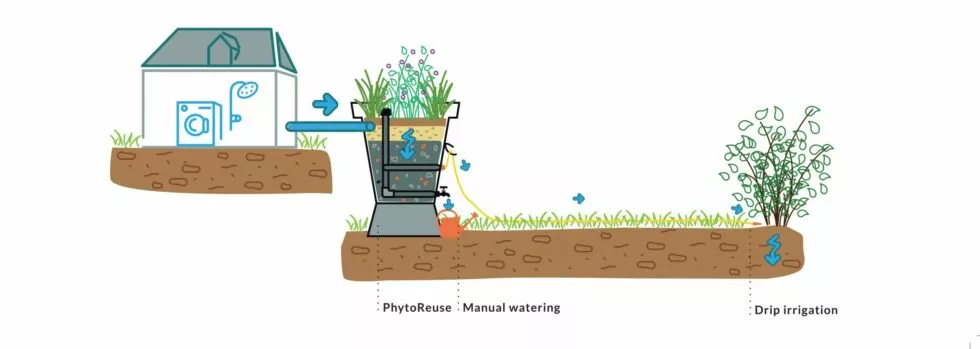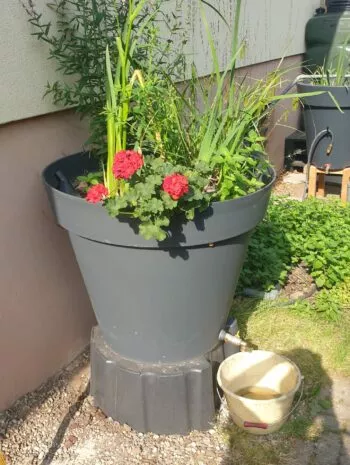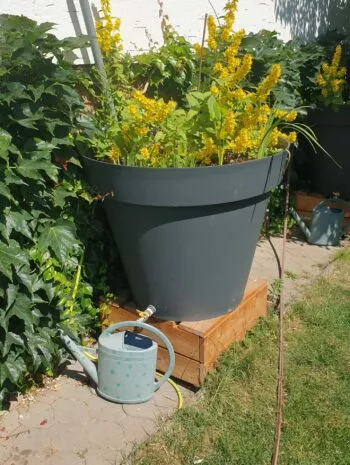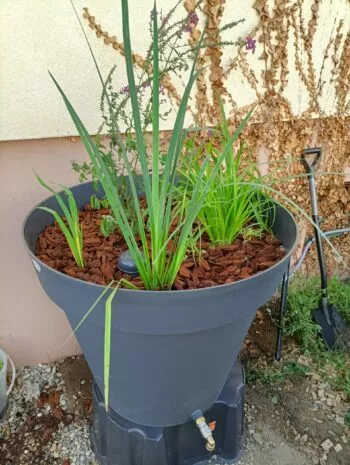PhytoReuse
Aquatiris pays particular attention to the optimisation of resources by developing ecological solutions with plants that give wastewater a second life. In line with this, Aquatiris has invented PhytoReuse, an innovative solution that allows the reuse of wastewater from the sink, the washbasin, the washing machine and the shower, excluding water from the toilet.
Using plants to recycle household wastewater
Household wastewater, although it has already been used, is an important source of water. This water also contains nutrients, mainly phosphorus and nitrogen, and is a significant source of nutrients for plants. Wastewater can therefore be recycled for new uses such as crop irrigation and watering green spaces.
Watering your garden with treated wastewater will allow your plants to grow quickly, as plants particularly appreciate the macronutrients and micronutrients contained in these liquids. Nevertheless, the use of recycled wastewater to water plants is subject to strict compliance with a certain quality limit. This is to avoid health risks and to guarantee the good health of humans and animals.
PhytoReuse is a system for recycling wastewater for the garden using phyto-purification. In particular, it is:
- the first system inspired by nature for the reuse of household wastewater (sink, washbasin, washing machine, shower), excluding water from the toilet,
- filtering materials that rid wastewater of the main pollutants while retaining its nutritional qualities,
- a reduced surface area, while maximising the volume of recycled and treated water.
Watering your garden plants with water that has already been used for domestic purposes is therefore an excellent way of reusing wastewater. This enables households to manage water resources sustainably.
Reusing wastewater with PhytoReuse: saving drinking water
Reusing treated wastewater for watering the garden also allows for significant savings in drinking water. PhytoReuse provides a resource of 80 to 100 litres of water per day per person for watering the garden.
For a household of 3 people, for example, with a 300 m² garden, the annual usable volume of water is the equivalent of 1mm of rain per day. Thus, the volume of recoverable wastewater corresponds to half of the average annual rainfall. Two types of use are then possible:
- manual watering with a tap to fill the watering can with treated wastewater (watering of green spaces or ornamental gardens),
- autonomous watering with a hose thanks to a self-priming siphon (irrigation of one or more green spaces).
A system that adapts to homes connected or not connected to the mains drainage system
PhytoReuse is a system that complements the compulsory sanitation system.
Depending on watering requirements, simple valves allow household wastewater to be directed to the PhytoReuse system or to the sanitation system. The system then adapts perfectly to the water requirements of the garden.
Reusing wastewater with PhytoReuse: a nature-based solution

When watering is required, household wastewater is directed to PhytoReuse. The wastewater used passes vertically through the sand filter and is then stored at the bottom of the pot in a specific filter medium.
The advantages of the PhytoReuse wastewater reuse system
The PhytoReuse system for the reuse of treated wastewater for crop irrigation and watering of green spaces has many advantages.
Natural
- Solution based on nature and plant engineering
- Operates autonomously and without energy
Vegetation and biodiversity
- Green plants even in periods of drought or heatwave
- Keeps soil cool
- Creates islands of coolness that promote biodiversity
Aesthetics
- Perfect integration of this REUSE system into the landscape
- Forms a vegetational embellishment
Low carbon footprint
- Bio-based filter materials
- Use of plants and charcoal as a carbon sink
French quality
- REUSE system designed and manufactured in France
- Local materials (plants, coal, etc.), sourced as close as possible to the site
Simple maintenance
- Simple weeding and cutting of plants (annual) for the maintenance of this treated wastewater reuse system,
- Consists of emptying the water storage area during the winter to regenerate the purifying properties of the REUT device.
Guarantees
- Selection of quality materials and supplies
- Nationwide after-sales service




